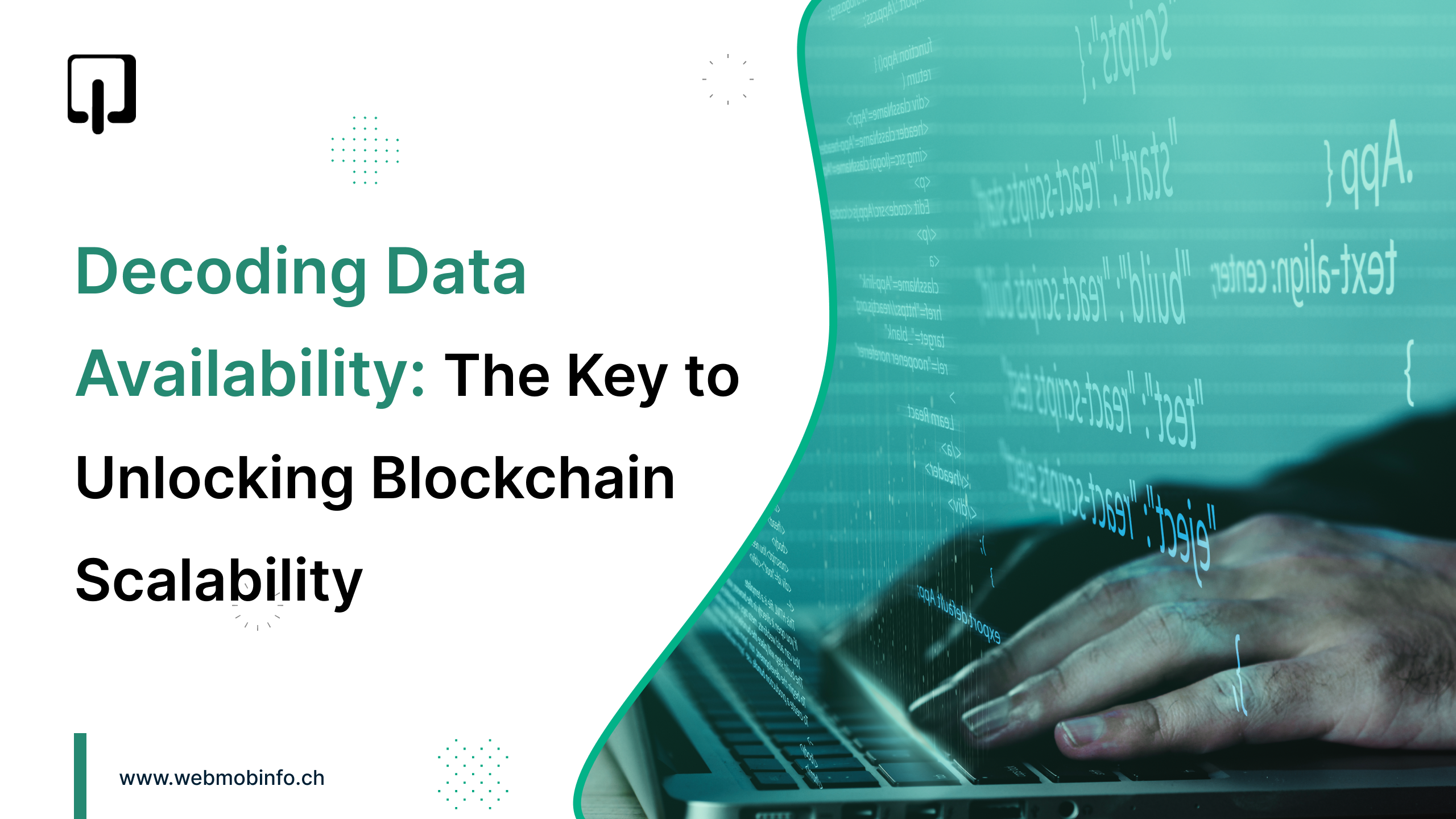In the realm of blockchain technology, Ethereum stands as a pioneer, revolutionizing decentralized applications and smart contracts. Yet, its journey towards scalability has been marked by the daunting blockchain trilemma. However, amidst the pursuit of scalability, one crucial aspect often overlooked is data availability.
In this comprehensive guide, we delve into the intricacies of data availability, its significance, challenges, and innovative solutions reshaping the landscape of blockchain scalability.
Understanding Data Availability:
At its core, data availability ensures that every node within the blockchain network possesses access to the transaction data essential for validating each block. This principle underpins the trustless nature of blockchain, enabling independent verification by all participants. Without it, the integrity and decentralization of the network could be compromised, paving the way for fraud and censorship.
Importance of Data Availability:
Data availability serves as the linchpin for various facets of blockchain functionality:
Trustlessness: Empowers participants to verify the blockchain's dataset independently.
Decentralization: Upholds equal access to ledger data, thwarting centralization efforts.
Security: Facilitates the detection and rectification of inconsistent records, bolstering network resilience.
However, as blockchain networks expand, data availability can pose scalability bottlenecks, necessitating innovative solutions to mitigate these challenges.
Data Availability in Rollups:
Rollup scaling solutions, such as Optimistic and ZK-rollups, offer promising avenues for enhancing Ethereum's throughput. By processing transactions off-chain and subsequently publishing them on the mainnet, rollups alleviate congestion and reduce gas fees. Yet, ensuring data availability remains paramount, underlining the need for robust validation mechanisms.
Optimistic Rollups: Employ compressed transaction data on the mainnet for validation, enhancing scalability while maintaining data integrity.
ZK-rollups: Utilize cryptographic proofs to validate state transactions, necessitating additional measures to guarantee data availability.
Challenges and Solutions:
Several challenges loom over blockchain data availability, including throughput constraints, storage costs, and trustlessness issues. Addressing these hurdles requires a multi-faceted approach:
Blockchain-level Solutions:
1. Data Availability Sampling (DAS): Enhances scalability by reducing node storage requirements while employing erasure coding to combat data withholding attacks.
2. Off-chain Data Availability Solutions:
Data Availability Committees (DACs): Trusted entities store data off-chain, ensuring accessibility and mitigating centralization risks.
Data Availability Protocols: Leverage permissionless networks and Proof-of-Stake mechanisms to offer decentralized off-chain storage solutions.
The Future of Data Availability:
As blockchain technology continues to evolve, data availability emerges as a cornerstone for achieving unprecedented scalability. Innovations such as data availability layers and danksharding are poised to revolutionize the landscape, offering enhanced efficiency and security.
In the realm of decentralized finance (DeFi), robust data availability mechanisms are instrumental in fostering trust and transparency, laying the foundation for a resilient financial ecosystem.
Expanding on Data Availability Solutions:
3. State Channels:
State channels are another promising solution for improving blockchain scalability by enabling off-chain, trust-minimized interactions. These channels allow participants to conduct numerous transactions off-chain while retaining the security guarantees of the underlying blockchain.
However, ensuring data availability becomes critical when settling disputes or finalizing transactions on the mainnet. Solutions such as watchtowers, which monitor state channel activity and ensure fair outcomes, play a crucial role in maintaining data availability.
4. Layer 2 Protocols:
Layer 2 protocols, built atop existing blockchains, aim to enhance scalability by processing transactions off-chain and settling them periodically on the mainnet. These protocols, including Plasma and Lightning Network, rely on data availability to ensure the validity and integrity of off-chain transactions.
By leveraging cryptographic proofs and consensus mechanisms, layer 2 solutions mitigate the risk of data manipulation or censorship, thereby fostering scalability without compromising security.
5. Hybrid Approaches:
Hybrid approaches combine on-chain and off-chain elements to optimize data availability and scalability. For instance, projects like Polygon utilize a combination of Ethereum's security and off-chain processing to achieve high throughput and low transaction fees.
By leveraging a network of validators and data availability committees, these hybrid solutions strike a balance between decentralization, security, and scalability, catering to diverse use cases within the blockchain ecosystem.
Conclusion:
In conclusion, data availability stands as a critical pillar in the quest for blockchain scalability. By ensuring universal access to transaction data and fostering trust among participants, it paves the way for a more inclusive and resilient decentralized ecosystem.
As we navigate the complexities of blockchain technology, prioritizing data availability heralds a future defined by innovation, security, and scalability. With a myriad of solutions on the horizon, the journey towards blockchain scalability continues to unfold, propelled by the collective efforts of developers, researchers, and enthusiasts worldwide.
WebMob Software Solutions, one of the most futuristic and innovative blockchain development companies, is implementing such high-end technologies to develop state-of-the-art fintech solutions. If you want to develop world-class blockchain and fintech solutions, give us a call today.
